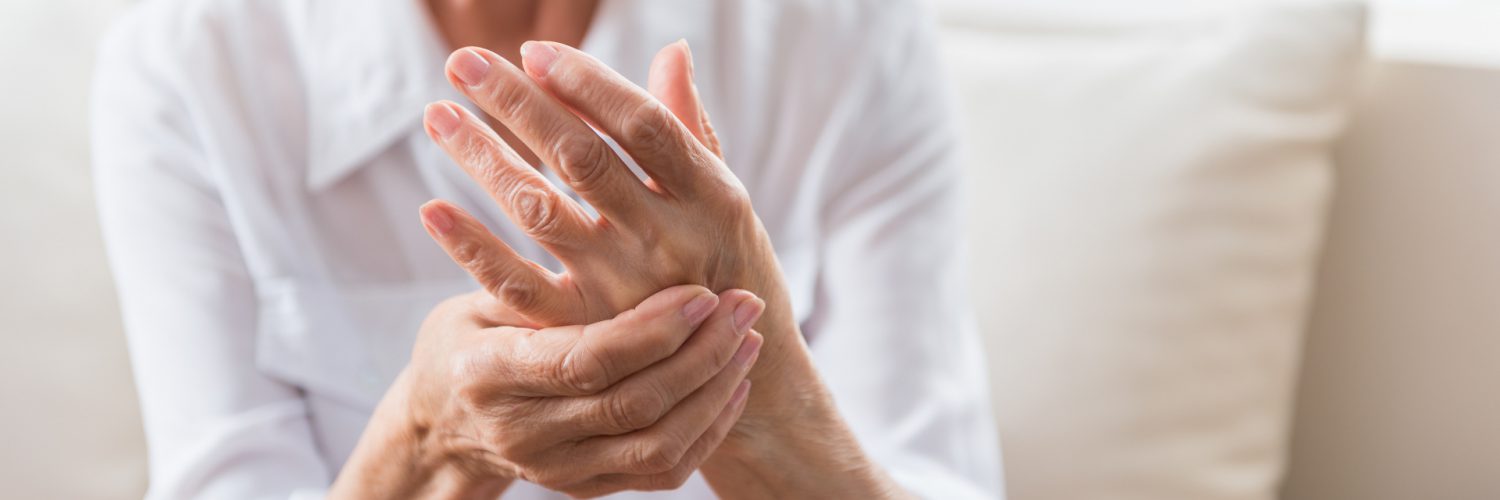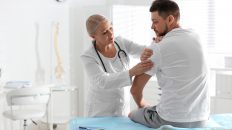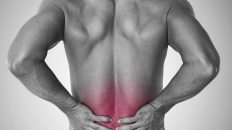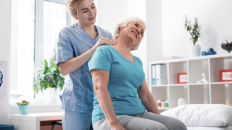Circulation problems not only in the upper limbs, but throughout the body, mostly affect the elderly, but unfortunately they are also found in younger and younger people. In order to have a positive effect on the blood vessels, a good diet and exercise are recommended as a preventive measure, but sometimes this is not enough. Find out how you can improve circulation in the upper limbs using vibrotherapy.
What is so-called poor circulation?
Poor circulation affects 80% of people in late adulthood, i.e. over 60 years of age. It is more common in men than in women. It most often affects the upper and lower limbs, which then have a limited blood supply..
Symptoms of circulation problems
Among the main symptoms of circulation problems are chronic fatigue and tiring too quickly. Brittle nails, falling hair and a pale, sallow complexion, cold hands and feet are further warning signs. Symptoms of poor circulation can also be seen in the form of bluish or purple lesions, which usually appear on the feet and calves. The feet are also often swollen.
Varicose veins and ulcers occur in people affected by circulation problems. In addition, impaired circulation may be accompanied by symptoms such as muscle cramps, frequent numbness in the upper or lower limbs, pulsation and tingling.
What could be the cause of poor circulation?
Circulation problems often occur due to narrowing of the blood vessels and, in extreme cases, even complete blockage. This is mainly due to the build-up of atherosclerotic plaques in the lumen of the arteries or to conditions such as hypertension or diabetes.
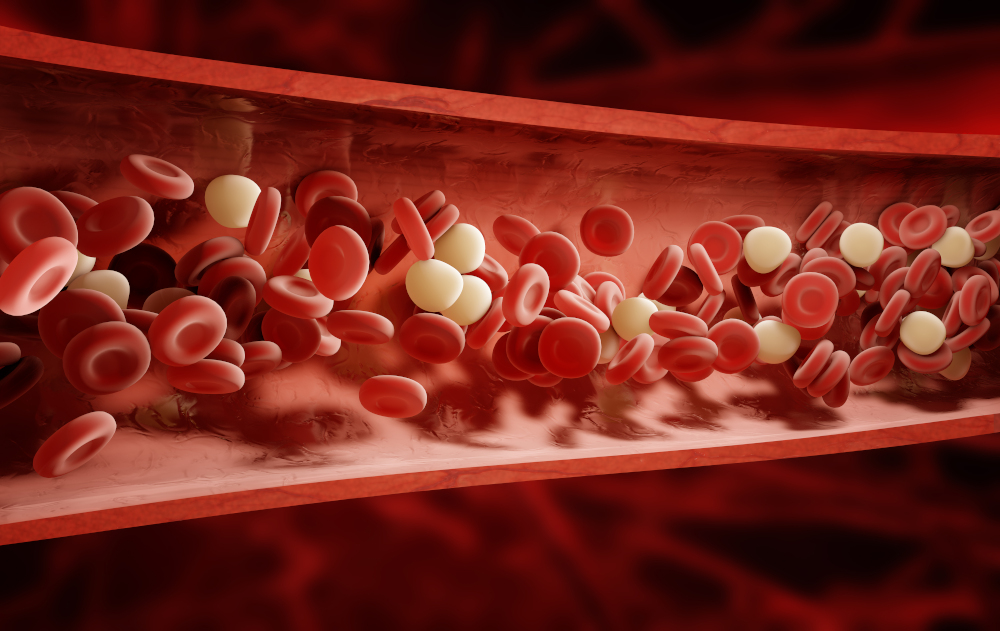
Causes of poor circulation can include relatively minor causes as well as life-threatening situations. Factors triggering health problems can include leading an inappropriate lifestyle, atherosclerosis, inflammation within the vessels, heart disease, ischaemic disease, valve defects.
Often, poor circulation is the cause of other, more serious conditions or, conversely, can be the result of other ailments, which is why extensive diagnosis is so important. In order to determine the exact cause of poor circulation in a particular case, it is necessary to consult an internal medicine doctor first. He or she will order basic examinations and, if necessary, refer you to an appropriate specialist.
When should you go to the doctor?
The following symptoms may indicate that a medical consultation is necessary:
- shortness of breath and chest pain,increased tiredness,
- decreased exercise tolerance,
- fatigue despite rest,
- shortness of breath,
- cold sweats,
- hot and cold sensations alternating,
- swelling of the limbs and skin lesions,
- irregular heartbeat,
- breathing difficulties and pain,
- wheezing.
Some symptoms appear relatively slowly and build up over time, others we notice suddenly. The latter are particularly dangerous, as they can result from acute venous insufficiency, which is often life-threatening – in which case the timing of intervention is important. Factors that often accompany acute circulatory insufficiency include heart defects, chronic bronchitis or hypothyroidism and hyperthyroidism.
How to improve blood circulation?
Improving circulation in life- or health-threatening situations is dealt with exclusively by the doctor after interviewing the patient and performing the relevant tests.
Natural ways to improve circulation include undemanding exercise, eating more citrus fruits or taking alternating hot and cold showers. Massages work well. A great way to improve circulation is also vibrotherapy, which is gaining popularity in Poland and around the world.
How does vibrotherapy improve circulation in the upper limbs?
Vibrotherapy applied to the upper and lower limbs significantly improves blood flow in a mechanical way. It is classified as a physical therapeutic method that has no side effects and can also be used by the elderly. The effect of vibrotherapy on the cardiovascular system is documented by numerous independent studies.
Vibrotherapy:
- improves blood flow in the limbs – this effect persists even after the therapy session has ended,
- speeds up the removal of metabolic by-products,
- reduces pain and discomfort associated with varicose veins,
- swelling and skin lesions,
- takes care of muscles and the state of the cardiovascular system (including reducing arterial stiffness).
A major advantage of vibrotherapy is that it can also be used in the course of other conditions and problems. It is worth remembering that, unfortunately, at a certain age, ailments are sometimes interconnected. It is not necessary to go to a professional physiotherapy clinic for this type of therapy, as it is possible to obtain equipment for vibrotherapy at home.
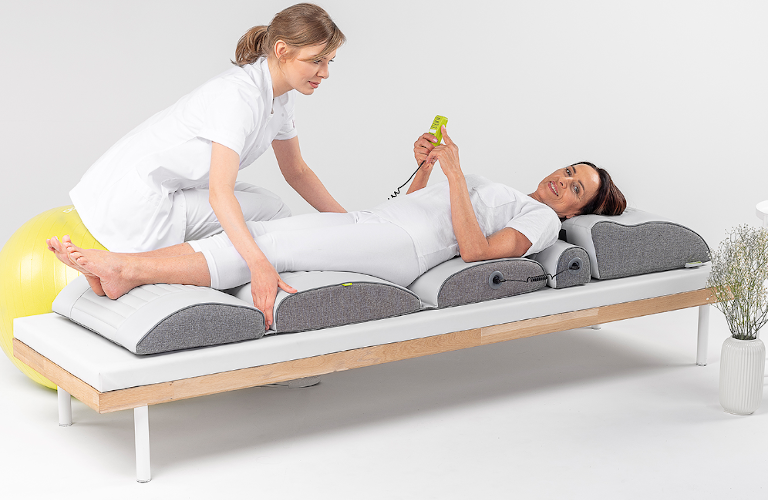
For whom would vibrotherapy be a suitable solution?
Anyone struggling with the symptoms previously discussed, particularly cold, swollen limbs with skin lesions, should consider starting therapy sessions. In addition to this, vibrotherapy devices are an excellent option for people:
- elderly, with hypertension, obesity, diabetes, atherosclerosis,
- cardiovascular disease,
- who have suffered a heart attack or ischaemic stroke – as part of rehabilitation after the event.
People who have tried vibrotherapy so far declare noticeable effects after the first treatment. No side effects of vibrotherapy have been reported.
It is worth opting for this type of therapy not only in situations where irreversible damage has already occurred, but even earlier as an effective preventive step. If you do not move enough, deviate from your diet, take medication that may cause circulation problems, use hormonal contraception or smoke, it is worth taking the appropriate steps even before problems arise.
Because vibrotherapy is extremely relaxing and has a positive effect on your overall well-being, it does not have to be seen at all as an unpleasant chore to protect you from the negative effects of circulation problems. It can be a moment of relaxation after a hard day or a time to dedicate to improving your health in a pleasant way. Vibrotherapy sessions are often compared to a gentle massage.
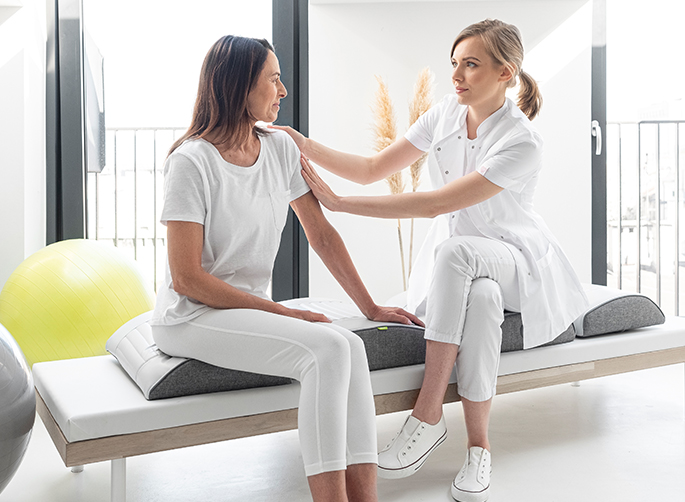
Vitberg Hands module
Among the vibrotherapy devices, the Vitberg brand apparatus is leading the way. The basis of the device is the Vitberg RS Base Device, which is a high-quality medical equipment for advanced rehabilitation and prevention. The device is equipped with a special programme dedicated to cardiovascular problems – RS Cardio. The programme is designed to improve circulation, saturation, reduce the formation of blood clots and reduce arterial stiffness.For the Base Unit, it is possible to purchase the Hands Module, which works together with the Back Module. This will make the action of vibrotherapy even more targeted to the specific problem.
Why choose Vitberg vibrotherapy equipment?
Vitberg vibrotherapy devices have been excellently tested over 25 years. In addition, they are used in hospitals, sanatoriums, rehabilitation and physiotherapy centres. As a result, you can be sure of the effectiveness and safety of such therapy.
Vitberg apparatuses and modules affect the body not only locally, but also holistically, making them even more effective. Using the convenient remote control, the intensity of the massage can be controlled and the device can be switched on and off. Specific modes are activated independently when the selected module is connected, making the control of the device extremely simple. The therapy can be carried out in various positions: lying down, semi-recumbent or sitting.
References:
The effect of 30 Hz vs. 50 Hz passive vibration and duration of vibration on skin blood flow in the arm. Maloney-Hinds C, Petrofsky JS, Zimmerman G. Med Sci Monit. 2008 Mar;14(3):CR112-6.
Effects of Local Vibration With Different Intermittent Durations on Skin Blood Flow Responses in Diabetic People. Ren W, Pu F, Luan H i wsp. (2019). Front. Bioeng. Biotechnol. 7:310.
Effects of whole body vibration training on body composition, skeletal muscle strength, and cardiovascular health. Park SY, Son WM, Kwon OS. J Exerc Rehabil. 2015;11(6):289-295.
Is There a Role For Whole Body Vibration in Protecting Cardiovascular Disease? Arq Bras Cardiol. Zornoff L, Minicucci MF. 2019;112(1):38-39. doi:10.5935/abc.20180257

